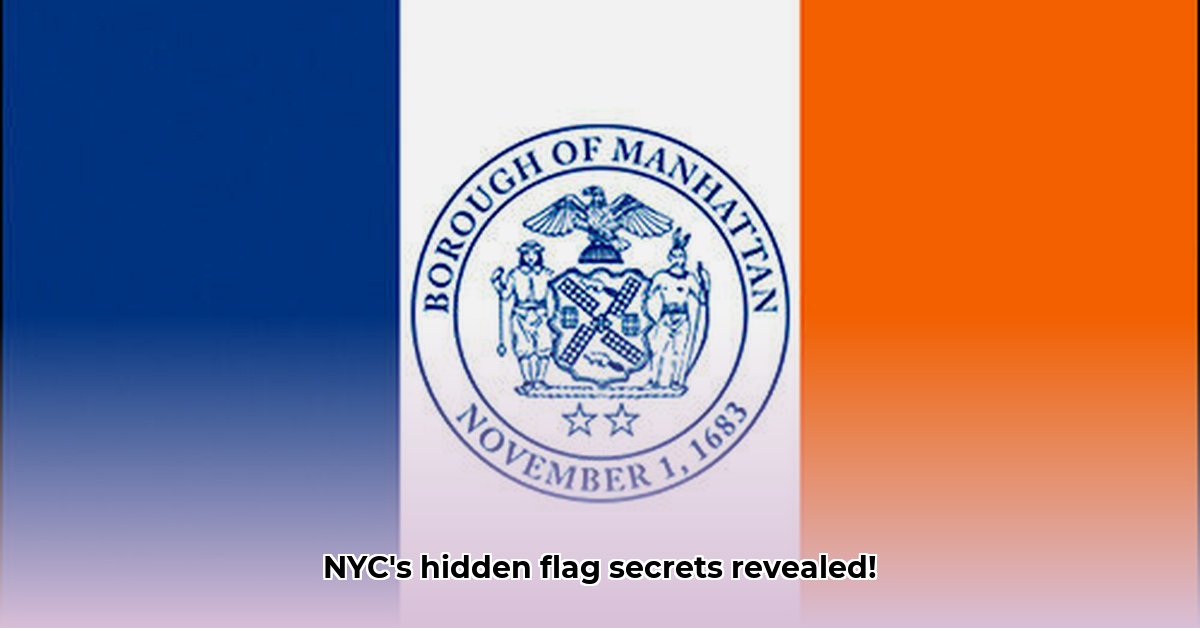New York City’s flag, a vibrant tricolor of orange, white, and blue, whispers tales of Dutch origins and colonial heritage. Derived from the Prince’s Flag of the 17th-century Dutch Republic, it’s a powerful symbol of the city’s evolution from New Amsterdam to the global metropolis we know today. This isn’t merely a decorative emblem; it’s a living testament to the city’s vibrant past. The central seal, a microcosm of New York’s historical narrative, interweaves the stories of indigenous inhabitants, burgeoning commerce, and maritime prowess. For more on early American flags, check out this link.
The flag’s orange, white, and blue hues resonate with the legacy of the Dutch House of Orange-Nassau, the driving force behind New Amsterdam’s establishment in 1625. White signifies purity and justice, while the steadfast blue embodies vigilance and perseverance, qualities deeply ingrained in the New Yorker spirit. This tricolor backdrop sets the stage for the city seal, an intricate narrative depicted in miniature.
Within the seal, a Native American figure, representing the Lenape people, stands as a poignant reminder of the land’s original custodians. A sailor, equipped with navigational tools, embodies New York’s enduring connection to the sea, its vital role as a port city, and the waves of immigration that shaped its identity. The industrious beaver, a symbol of the lucrative fur trade that fueled early economic growth, shares the space with a windmill, harkening back to the era of milling and the Dutch settlers’ ingenuity. These elements converge, encapsulating the city’s multifaceted origins and its transformation into a melting pot of cultures and industries. The date 1625, etched beneath the seal, anchors the design in the moment of New Amsterdam’s birth, a pivotal year that laid the groundwork for the city’s future greatness. Encircling the seal, a ribbon bearing the Latin inscription “Sigillum Civitatis Novi Eboraci” – “Seal of the City of New York” – adds an air of formality and historical weight.
Borough Flags: A Kaleidoscope of Neighborhood Identities
New York City’s five boroughs—each a distinct microcosm within the larger urban landscape—boast their own flags, adding further layers of symbolism and local pride to the city’s vexillological narrative. These borough flags are not mere replicas of the city’s banner; they are unique expressions of individual histories, cultural nuances, and community spirit.
The Bronx, the first borough to embrace its own flag, features a tricolor design reminiscent of the city flag, yet its central shield depicts an eagle, a symbol of hope and a nod to both the New World and the borough’s heritage. Brooklyn’s flag, a testament to its pre-consolidation independence, features Lady Justice, a Roman fasces symbolizing unity, and a motto emphasizing strength through togetherness. Queens’ flag, a celebration of nature and history, incorporates Dutch and English symbols alongside Native American wampum, capturing the borough’s blended heritage. Manhattan’s flag shares the city’s color scheme but features a unique seal highlighting the island’s indigenous history and maritime significance. Staten Island’s flag, a more recent creation, features the iconic Half Moon, a tribute to Henry Hudson’s exploration, alongside imagery celebrating the borough’s oyster industry and its peaceful nature.
Staten Island’s Flag: An Evolving Narrative
Staten Island’s flag history underscores the complex process of identity formation. Unlike its borough counterparts, Staten Island’s flag has undergone revisions and reinterpretations, reflecting the ongoing search for a definitive symbol that encapsulates its unique character. From the 2002 iteration to the 2016 redesign incorporating earth tones and emphasizing peace and local heritage, Staten Island’s flag continues to evolve. This fluid narrative mirrors the borough’s own journey as it navigates its place within the dynamic tapestry of New York City. The quest for a singular emblem is a testament to the ever-evolving nature of community identity and the power of symbols to shape collective understanding.












